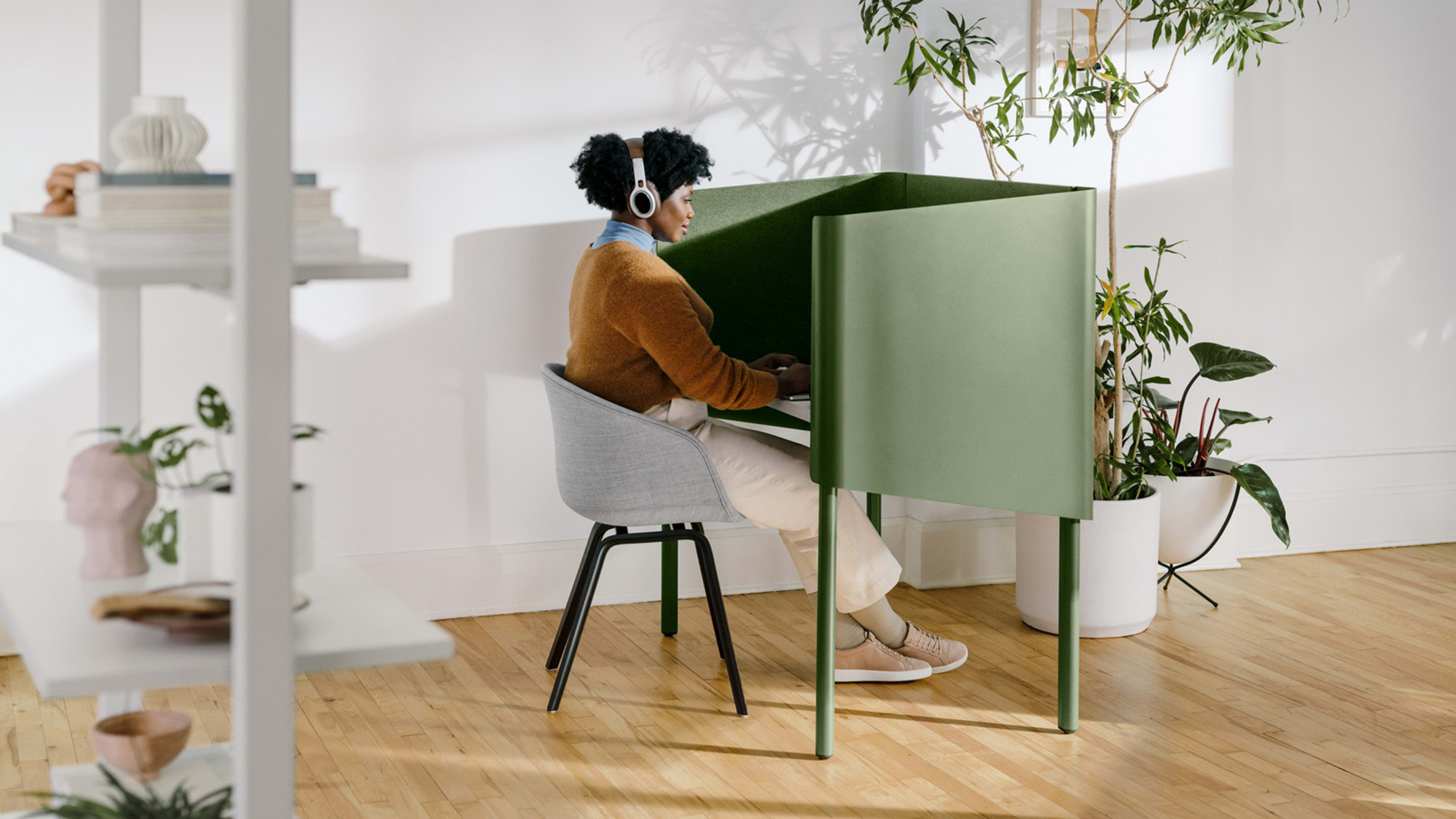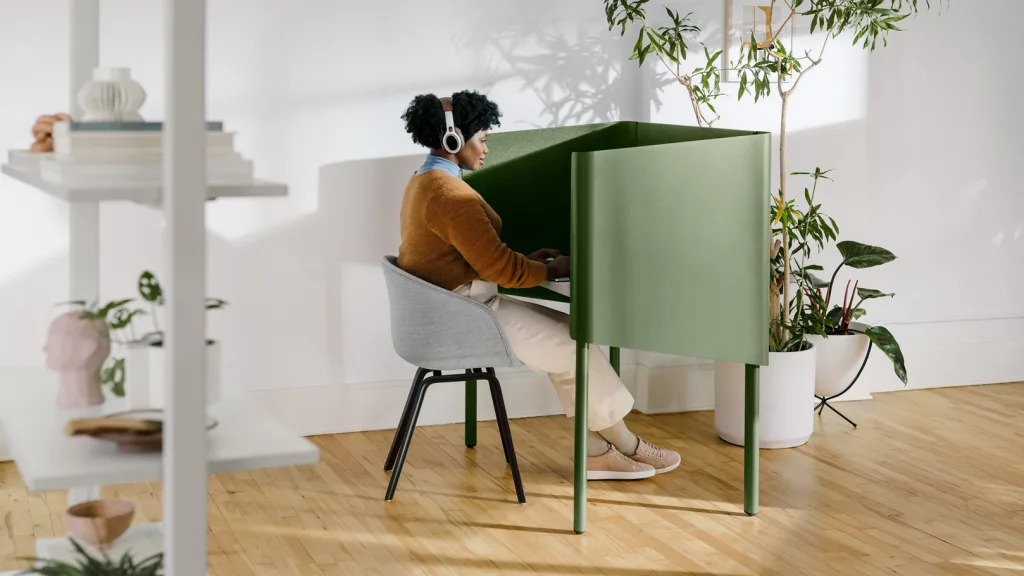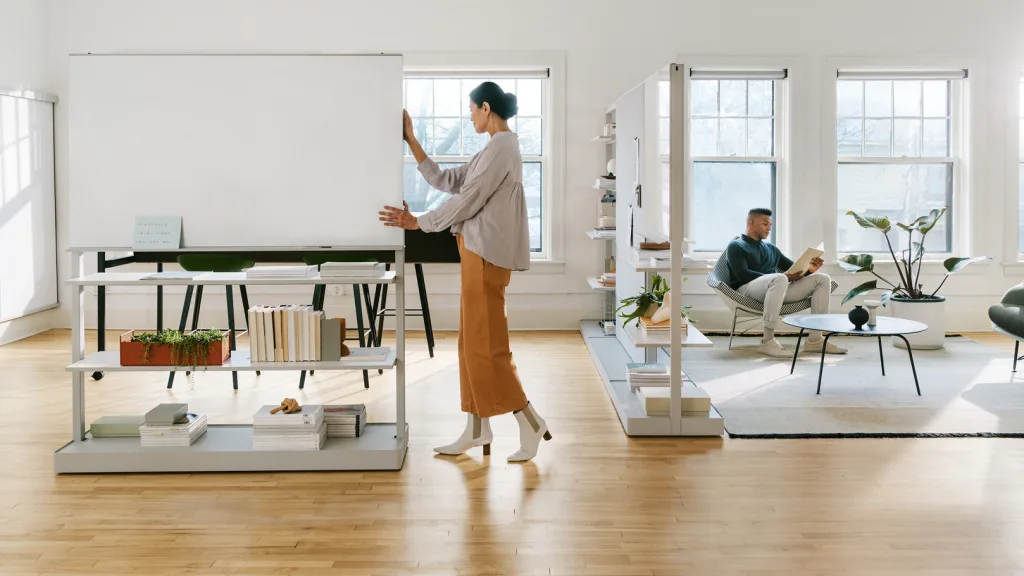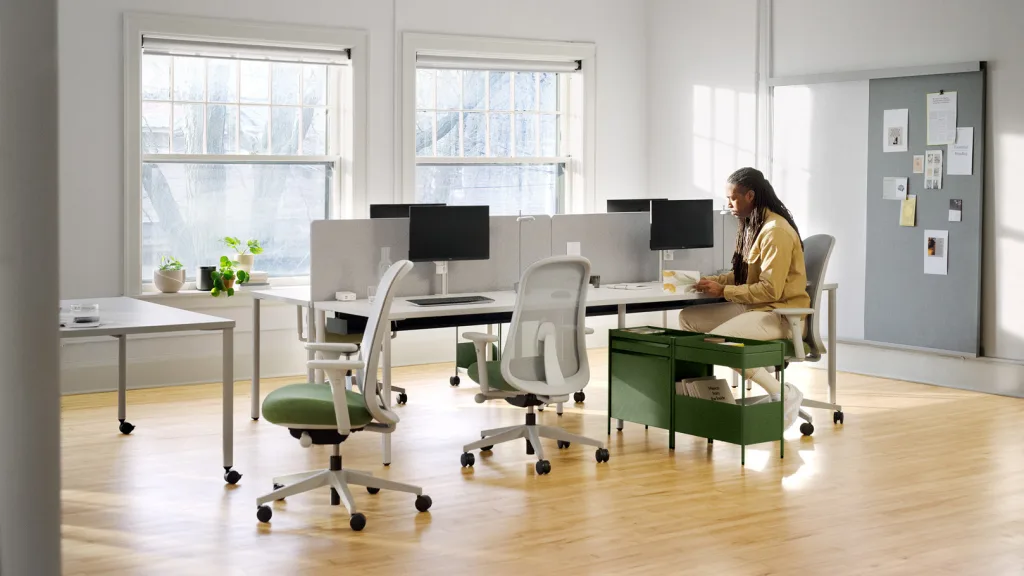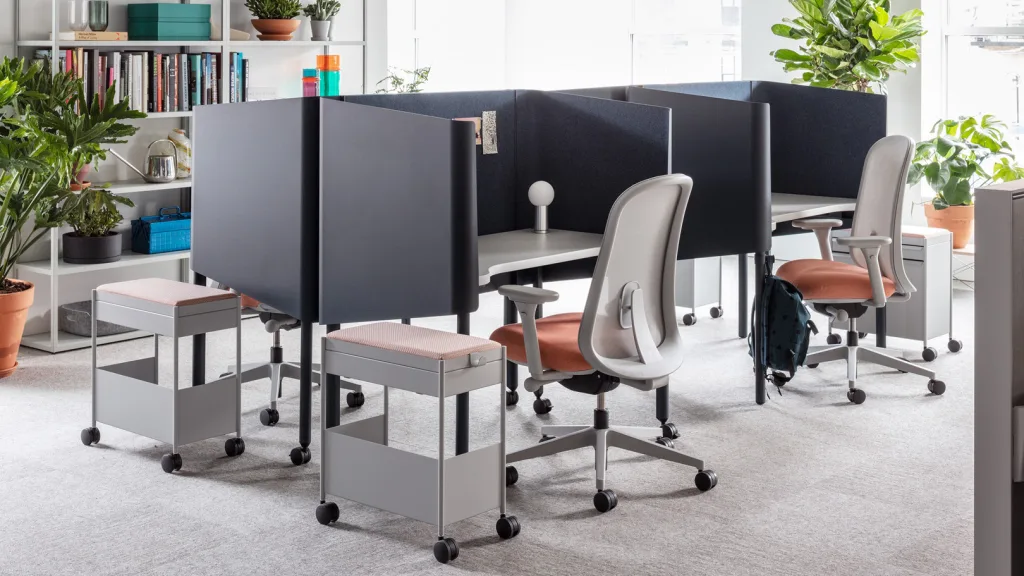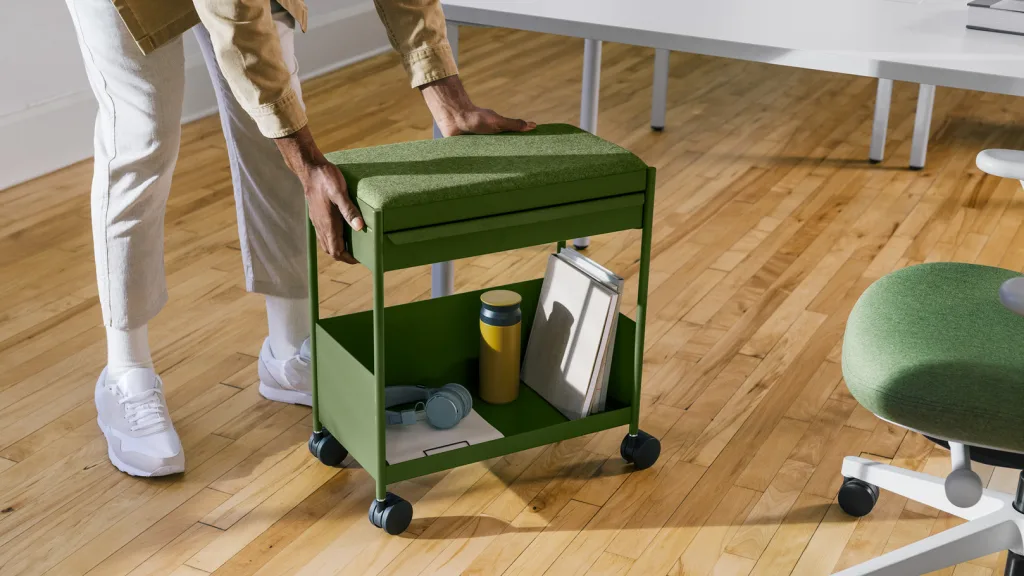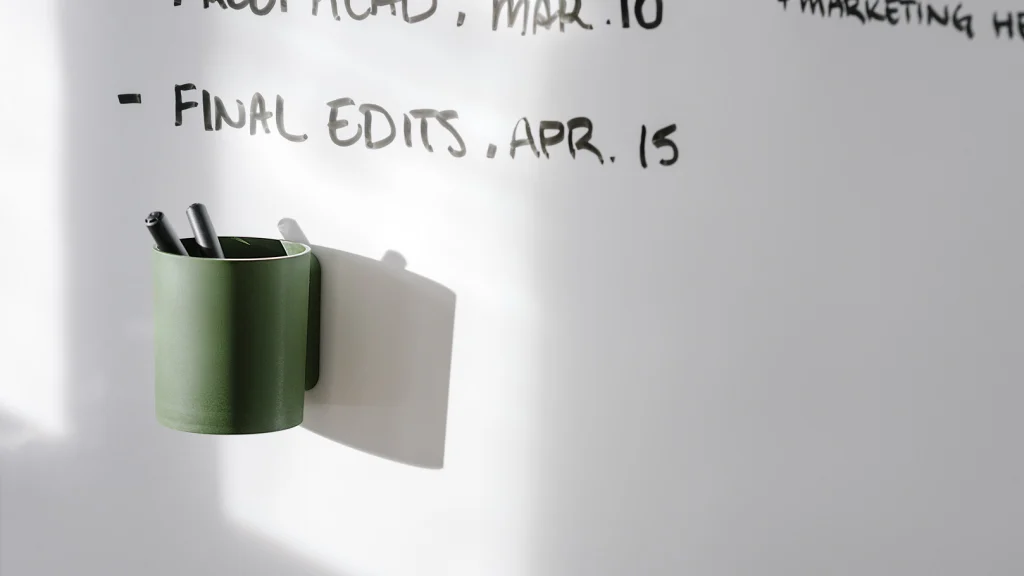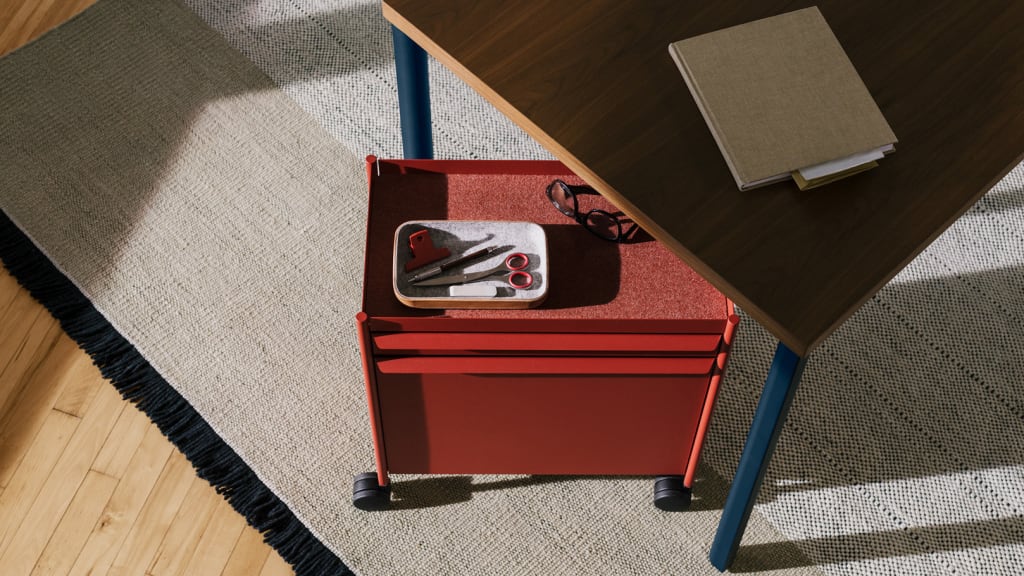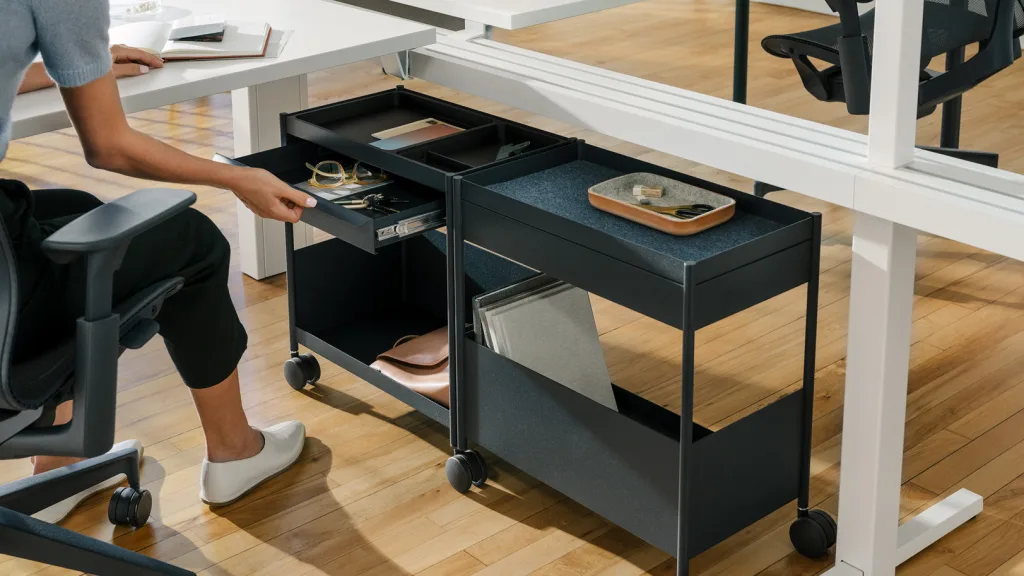COVID-19 changed everything about work. And no one knows exactly what the office of tomorrow will look like—not even the storied American design brand Herman Miller, a company that has been furnishing offices for decades. Which is why the Herman Miller’s latest furniture collection is designed precisely for uncertainty.
Called OE1, the new line is colorful, modular, and adaptable. Instead of being prescriptive, with interlocking pieces that are architected to convince people to work one way, just about everything in OE1 is made to move. The collection is available now.
The ideas behind OE1 predate COVID-19. The collection is the result of two years of development, driven by an international research project, in which the team interviewed everyone from office managers to sci-fi writers about the future of work. But as the collection came to a crest in 2020, amid a rise of remote work in response to the global pandemic, this future-forward design became a much more urgent one.
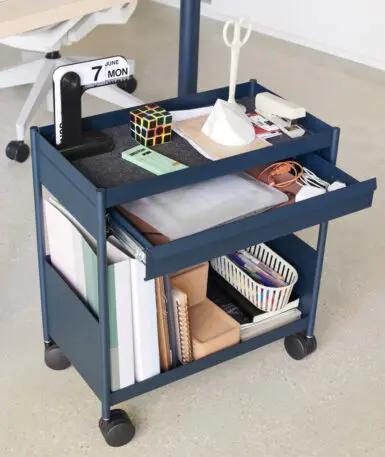
“I often say with a mixture of pride and sorrow that Herman Miller invented the cubicle . . . probably envisioning a utopia, and it became something different,” says Andi Owen, CEO at Herman Miller. “We envision a future where [modular, flexible] furniture styles are the ones that are most dominant, and the traditional, walking into cubicles, is going to continue to decline.”
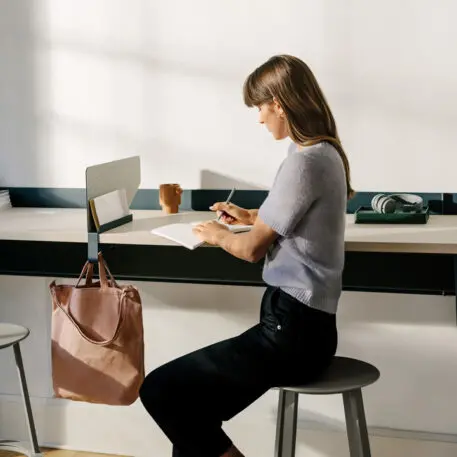
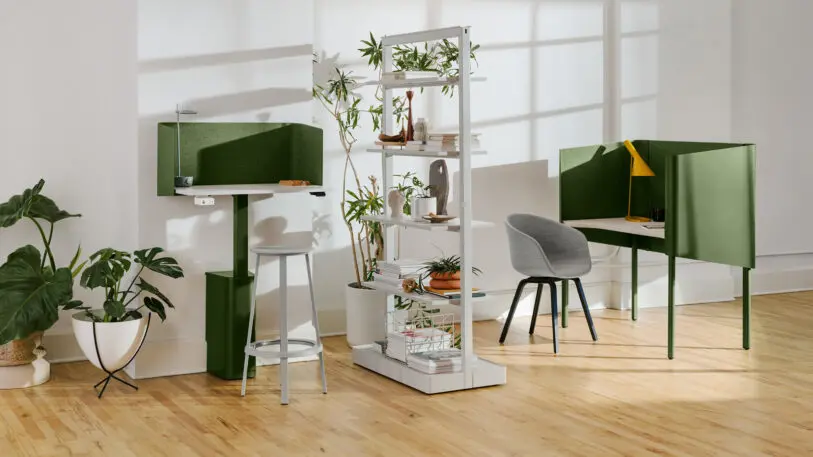
I’ve come to think of OE1 as something like Gap basics for office furniture. The pieces are simple and intermixable, but splashed aggressively with colors (including olive green, nightfall blue, and canyon red) to cut through what could otherwise be a drab, gray workplace. The are also priced (relatively) cheaply in the world of office furniture. Pieces start in the hundreds, and appear to top out around a couple thousand dollars—Herman Miller’s existing workstations can work their way into five figures.
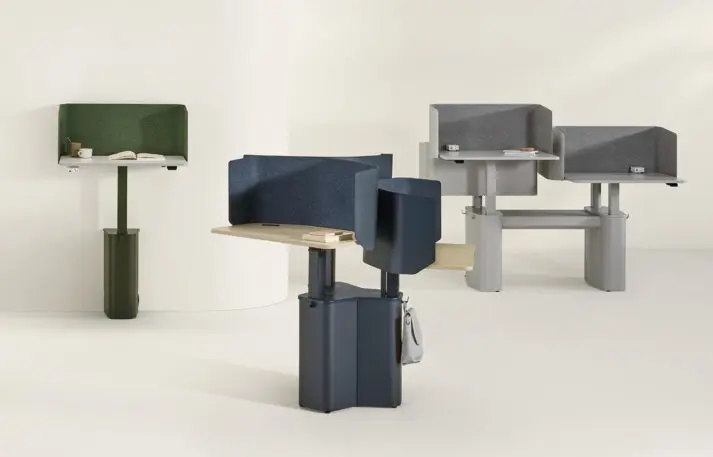
The Micro Pack is an elegant pedestal that supports a sit-stand desk. These desks are small, made for drop-in work, and reminiscent of a personal reading space at a library, with colorful fabric dividers that provide you a bit of privacy without walling you off. The thing about the Micro Pack that makes it so unique is that it can be stuck somewhere on its own, to turn even a small hallway into someone’s workspace, or it can be grouped with other Micro Packs, to create a little hub of desks.
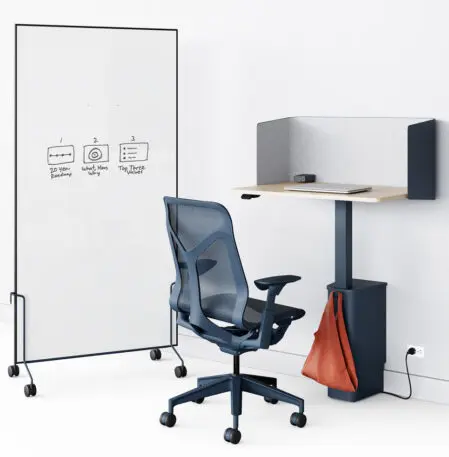
The elephant in the room is that these Micro Packs are, well, micro. That’s intentional. “One thing, pre-pandemic, that required addressing was density. Office spaces are getting more expensive, and we need more staff to populate them in a smaller space,” says Hecht, who explains that the trick was to compensate for a smaller desk size by “making it as comfortable as possible.” Finding a sweet spot between tiny and pleasant is a serious challenge facing offices right now. According to a 2020 survey by the professional services network KPMG, as many as 68% of CEOs are planning to downsize their office spaces out of the pandemic.
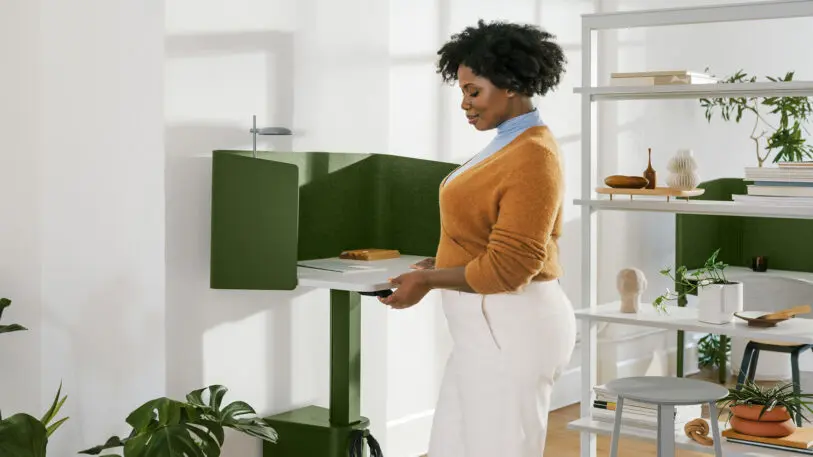
Another surprisingly thoughtful piece of furniture is the Mobile Easel. At first glance, it’s just an easel on wheels. But as Hecht demonstrates over Zoom, he rolls up the steel frame with one hand. Then he lifts the white board out, also, with just one hand. That’s because the easel is a mere six pounds, and it uses an integrated spring mechanism to let you lift the board out easily, for on-the-fly, IDEO-style ideation.
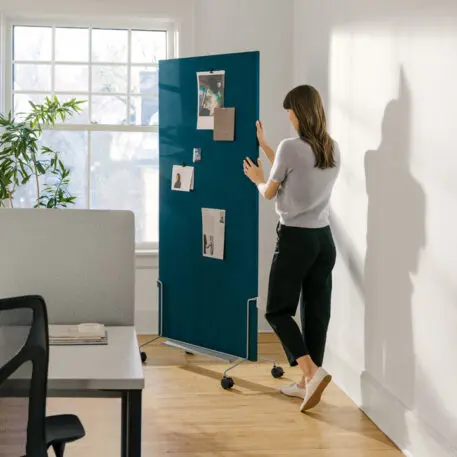
The Mobile Easel also stretches the white board to the ground level, which not only creates the sensation of having a wall in your space, but makes it more accessible to someone in a wheelchair than a white board placed at chest height.
“With one product we managed to create something that people will fall in love with, I believe, because of the way they don’t notice it,” says Hecht of the easel. “They don’t notice the things they’re doing with it because they feel so natural and obvious.”
That sentiment sums up the rest of the OE1 collection. New tables can stand alone or roll together into “benched” work spaces that are the trademark of open office plans. A slim storage trolley can be pulled beside any workspace—and it’s designed less to hold obsolete paper files than it is a bike helmet or coffee. Even a matching Marker Cup was designed to suction on and off white boards.
OE1 is available for order now.
Recognize your brand’s excellence by applying to this year’s Brands That Matter Awards before the early-rate deadline, May 3.
